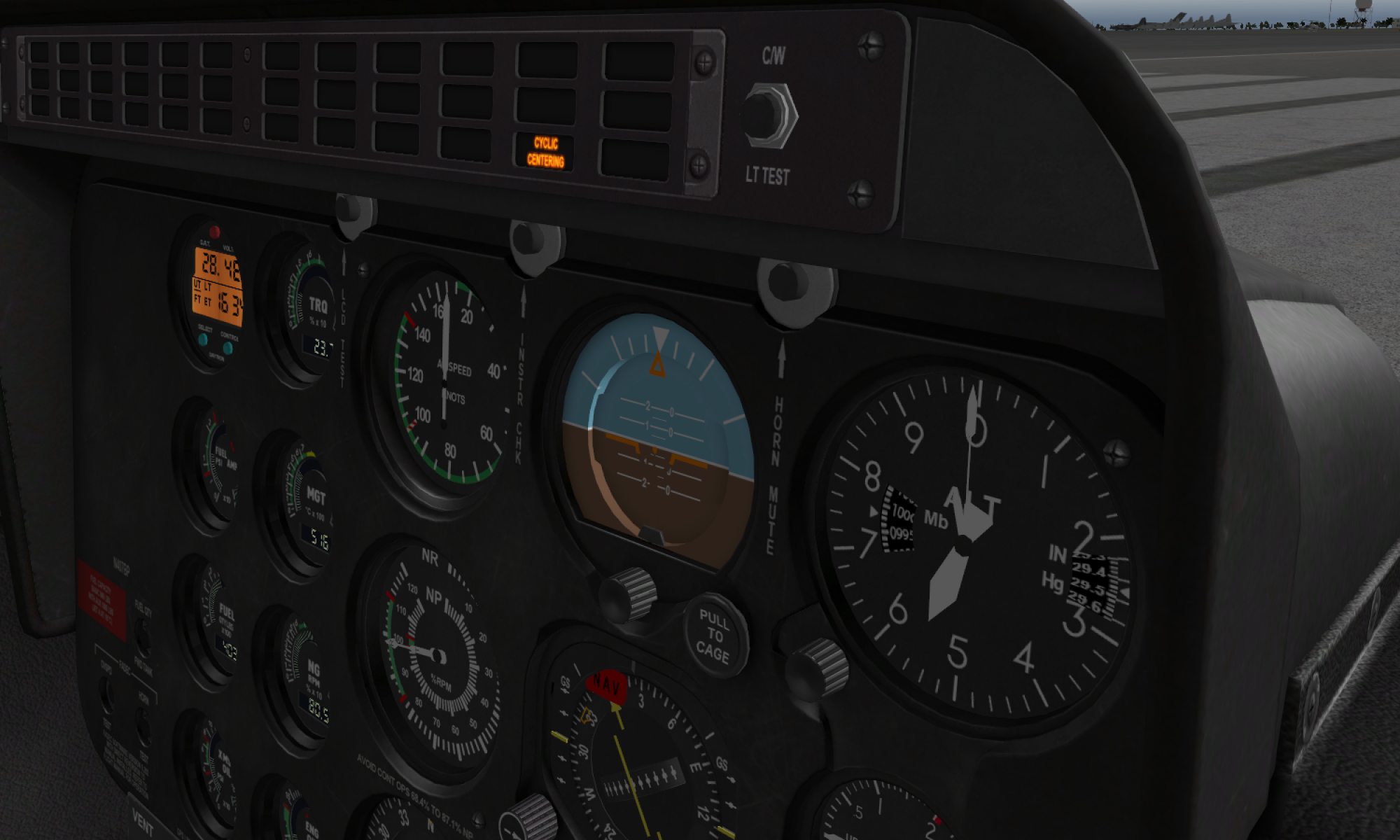The cyclic control, commonly called the cyclic stick or just cyclic, is similar in appearance on most helicopters to a joystick from a conventional aircraft. It is usually located between the pilot’s legs, but on some helicopters, such as the Robinson R22, it is a central pillar that either pilot can manipulate.
The control is called the cyclic because it changes the pitch angle of the rotor blades cyclically. That is, the pitch, or feathering angle, of the rotor blades changes depending upon their position as they rotate around the hub, so that all blades have the same incidence at the same point in the cycle. The change in cyclic pitch has the effect of changing the angle of attack, and thus the lift generated by a single blade as it moves around the rotor disk. This in turn causes the blades to fly up or down in sequence, depending on the changes in lift affecting each individual blade.
The result is to tilt the rotor disk in a particular direction, resulting in the helicopter moving in that direction. If the pilot pushes the cyclic forward, the rotor disk tilts forward, and the rotor produces a thrust vector in the forward direction. If the pilot pushes the cyclic to the right, the rotor disk tilts to the right and produces thrust in that direction, causing the helicopter to move sideways in a hover or to roll into a right turn during forward flight, much as in a fixed-wing aircraft.
Any rotor system has a delay between the point in rotation where the controls introduce a change in pitch and the point where the desired change in the rotor blade’s flight occurs. This difference is caused by phase lag, often confused with gyroscopic precession. A rotor is an oscillatory system that obeys the laws that govern vibration—which, depending on the rotor system, may resemble the behaviour of a gyroscope.

